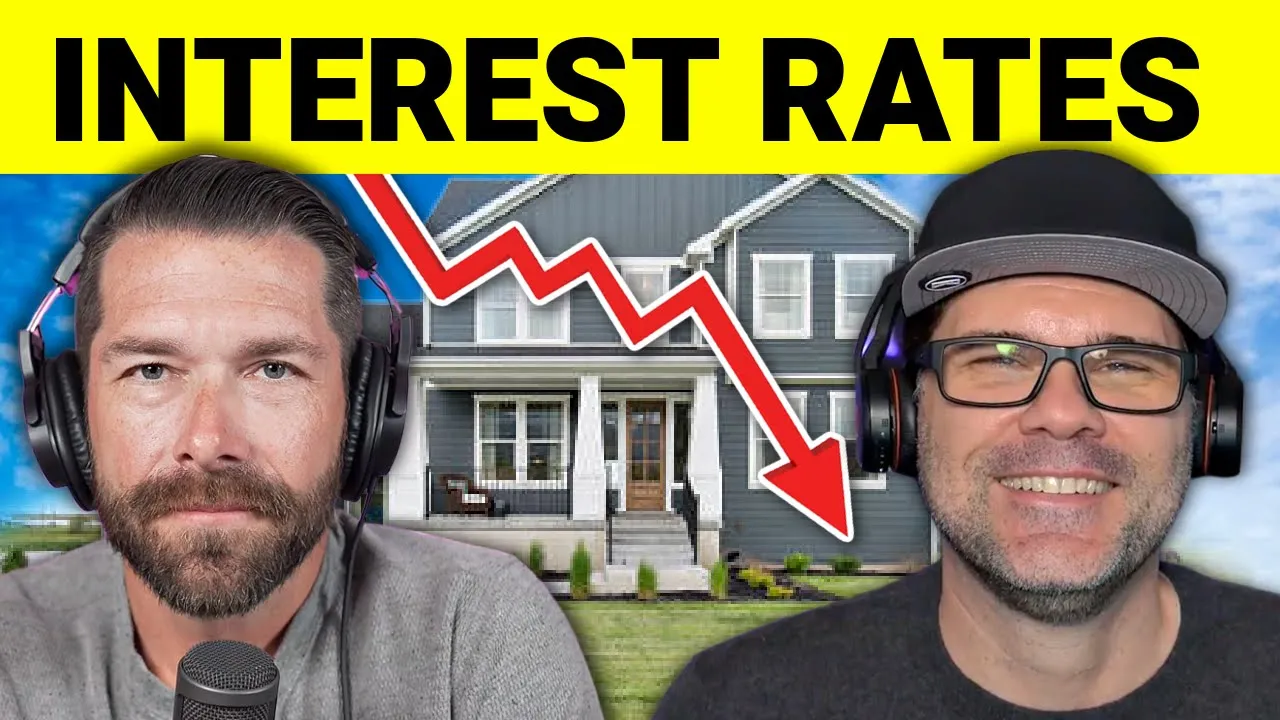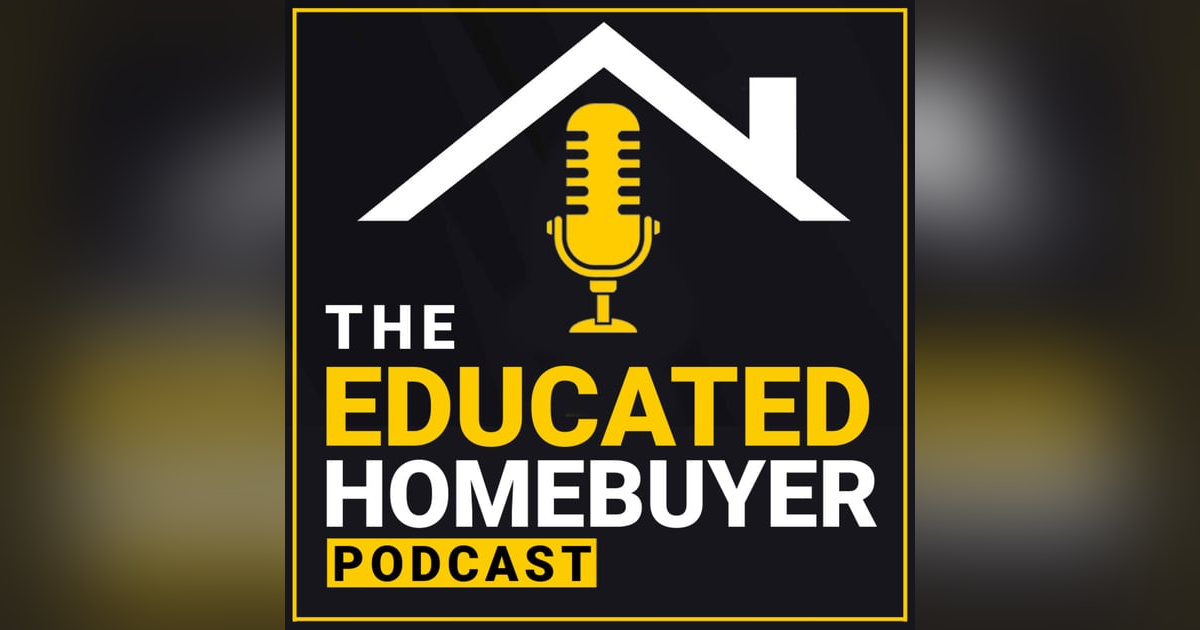THIS Is When Mortgage Interest Rates Will Head LOWER

THIS Is When Mortgage Interest Rates Will Head LOWER
A practical, data-driven guide to what really has to happen before mortgage rates fall — and how to prepare so you can buy right, borrow smart, and build wealth.
👉 Start at theeducatedhomebuyer.com/start
We’ve guided hundreds of buyers and homeowners through changing markets. A smart plan today means less stress tomorrow.
If you’ve been asking, “When will mortgage interest rates go down?” you’re in good company. It’s the single most common question we get from homebuyers and homeowners alike. The short answer: rates fall when the economy cools in a predictable way, inflation steadily moves toward 2%, and the bond market believes it. The long answer is what this article is about: the mechanics, the signals, and how to position yourself to win when momentum finally turns.
Why Mortgage Rates Are Elevated Right Now
Mortgage pricing is set in the bond market, not at the Fed’s conference table. Lenders price loans off mortgage‑backed securities (MBS), which track closely with intermediate‑to‑long Treasury yields (historically the 10‑year; lately, the 7‑year has been an even tighter fit). So why are those yields elevated? A handful of interlocking forces:
1) Labor market resilience (on the surface)
The headline unemployment rate remains historically low. Under the hood, high‑frequency data—job openings, layoff announcements, and continuing claims—suggests a gradual softening, not a break. Until the labor market cools more clearly, investors assume wages won’t re‑accelerate inflation.
2) Inflation is lower—but not low enough
Goods inflation has eased and in some pockets flipped negative year‑over‑year. Services inflation (especially healthcare and shelter) is stickier. The Fed watches core PCE and trimmed means, not just headline CPI. Those are improving, but progress has been bumpy.
3) Tariff overhang and price resets
Tariffs don’t create ongoing inflation. They trigger a one‑time price reset that shows up for ~12 months. Markets hate uncertainty; the threat and calibration of tariffs—often in the mid‑teens with higher tiers for targeted countries—keeps a modest inflation premium embedded in yields.
4) Term premium & deficits
The U.S. is issuing a lot of debt. When supply is heavy and buyers want additional compensation to hold longer‑dated bonds, the term premium rises. That nudges Treasury yields—and by extension, mortgage rates—higher than models based on inflation alone would suggest.
What Has to Happen for Mortgage Rates to Head Lower
Think of lower mortgage rates as a three‑lock door. To open it, you need all three tumblers aligned—economy, inflation, and market confidence.
Lock #1: The economy cools—cleanly and consistently
- Payroll growth undershoots expectations repeatedly (not just one month).
- Unemployment drifts up in steps (e.g., 0.3–0.6 percentage points over several months).
- Weekly claims and continuing claims trend higher on a 4‑week average.
- GDP settles near ~1–1.5% after smoothing tariff‑distorted quarters.
Lock #2: Inflation glides to 2% territory
- Core PCE runs ~2–2.3% annualized on a 3–6 month basis.
- Goods prices stabilize or continue disinflating after tariff effects roll off.
- Rents/OER cool as new leases flow through indices with a lag.
Lock #3: Bond market buys the story
- Investors accept that inflation risk is fading, so they demand a lower inflation premium.
- Term premium compresses as issuance is absorbed and volatility declines.
- MBS–Treasury spreads narrow as volatility falls and demand improves.
Translation: Rates can drift lower before the Fed acts—if markets believe the glide path is real.
What the Fed Controls (and What It Doesn’t)
The Fed does not set mortgage rates. It targets the overnight rate and communicates guidance. Mortgage pricing is a market output. A useful mental model:
- Fed funds rate ↓ → usually supportive for risk assets and lower short‑term rates, but mortgages follow intermediate yields.
- Guidance & credibility → if the Fed’s words align with data, volatility falls. Lower vol = tighter MBS spreads = lower mortgage rates.
- Balance sheet (QT/QE) → outright MBS purchases (QE) compress spreads; QT can widen them. Today’s environment sits between those extremes.
Last year offered a perfect cautionary tale: the Fed cut 100 bps in total—yet mortgage rates rose because inflation readings surprised to the upside. The market, not the Fed, had the last word.
Inflation, Tariffs & Prices: What Really Matters
Tariffs ≠ perpetual inflation
Tariffs are a tax that gets split among exporters, importers, and consumers. The immediate effect is a price level jump; the ongoing effect depends on competition and consumer tolerance. With price fatigue high, businesses have less room to pass along costs—limiting persistence.
Where inflation pressure is (and isn’t)
- Goods: Supply chains normalized; many categories already disinflated. Tariff noise aside, goods are no longer the inflation driver.
- Services: Healthcare has been an outlier; shelter inflation is easing as new leases filter in.
- Wages: Healthy but not re‑accelerating. Less bidding wars for workers = lower risk of wage‑price spirals.
A Realistic Timeline for Lower Rates
Markets tend to move gradually after being burned by head‑fakes. The most probable path from here is a slow, steady grind lower with periods of sideways chop.
Base case (most likely)
- Next 3–4 months: Data mixed but trending cooler; mortgage rates drift lower by ~0.125–0.25%
- 4–8 months: Two to three consecutive benign inflation prints; spreads tighten; another ~0.25–0.5% improvement is plausible
- 8–18 months: If the soft‑landing narrative holds, gradual easing continues; if growth under‑shoots, downside accelerates
Upside & downside risks
- Upside (faster drop): Clear labor market break, negative payroll revisions, or a geopolitical risk‑off move drives Treasury demand.
- Downside (stall): Sticky services inflation, tariff escalation, or heavier‑than‑expected Treasury supply lifts term premium.
Monthly Watchlist: Data That Moves Mortgages
Jobs & wages
- Non‑Farm Payrolls (NFP) — first Friday monthly
- Unemployment rate & participation
- Average hourly earnings
- JOLTS openings & Challenger layoffs
- Weekly initial & continuing claims
Inflation & growth
- CPI & PCE (core) — focus on 3‑ & 6‑mo annualized
- GDP — mind tariff front‑loading/deferrals; smooth with averages
- ISM services & manufacturing
- Retail sales & consumer confidence
Pro tip: It’s not one print—it’s trends. Markets reward consistency.
Buyer Playbooks for Three Common Scenarios
Scenario A: “I have to move now.”
- Prioritize the payment, not perfection. Secure a home that fits life and budget today; plan to refinance later if rates improve.
- Negotiate credits. Ask for seller credits and shop lender pricing; use buydowns if they create real breathing room.
- Consider product mix. Conventional vs. FHA/VA vs. jumbo can change the math; a seasoned broker can map the break‑evens.
Scenario B: “I can wait 6–12 months.”
- Get fully underwritten now. A rock‑solid approval strengthens offers when you pounce.
- Track target neighborhoods. Save searches; learn micro‑pricing to spot deals fast.
- Build reserves & credit. Every 20‑point FICO tier and extra month of reserves improves pricing.
Scenario C: “I’m on the fence.”
- Run the two‑path plan. Path 1: Buy now + conservative refi later. Path 2: Wait + potential price/rate scenarios. Compare 5‑year total cost.
- Stress‑test. Could you handle a surprise HOA hike, tax reassessment, or one income for 3 months? If not, shore up first.
Refinance Readiness Checklist
- Define your trigger. Example: “Refi if rate is ≥0.75% lower and breakeven ≤24 months.”
- Document vault. Keep income, asset, and property docs current to move fast when windows open.
- Mind the math. Include costs, escrows, points/credits, and remaining horizon in your breakeven.
- Shop intelligently. Compare APR, not just rate. Weigh lender credits vs. points vs. lock flexibility.
- Watch spreads. Refi windows often coincide with tighter MBS spreads—volatility down, pricing up.
Rapid‑Fire FAQs
Do mortgage rates fall the day the Fed cuts?
No. They often move ahead of the Fed if markets expect cuts, or in the opposite direction if inflation surprises.
Could rates return to the 2–3% range?
Those were a function of an extraordinary shock + QE. Never say never, but base plans on mid‑4s to mid‑6s cycles with episodic dips.
Is a 2‑1 buydown a good idea?
Sometimes. If the seller funds it and you’re confident about qualifying at the note rate, it can bridge the first 24 months. Always compare to a permanent buydown.
What about ARM loans?
Well‑underwritten ARMs can make sense if your time horizon is shorter than the fixed period and caps are sane. Understand fully indexed worst‑case payments.
Will a recession guarantee lower rates?
Recessions are disinflationary by definition, which usually pulls rates down. Severity, inflation trajectory, and policy response determine the magnitude.
Plain‑English Glossary
MBS (Mortgage‑Backed Securities): Bonds backed by pools of mortgages; investors’ required returns set mortgage pricing.
Term Premium: Extra yield investors demand to hold longer‑dated bonds, influenced by supply, volatility, and uncertainty.
Core PCE: The Fed’s preferred inflation gauge, excluding food and energy; watched on 3–6 month annualized trends.
Spread: The difference between two yields—commonly MBS vs. Treasuries. Tighter spreads = better mortgage pricing.
Breakeven: Months needed for refi savings to recoup costs. After that, it’s pure monthly benefit.
👉 Get started at theeducatedhomebuyer.com/start
The Educated Homebuyer helps you buy right, borrow smart, and build wealth through real estate ownership and financing. New videos weekly.


